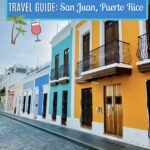The Visa Waiver Program (VWP) offers a convenient way for citizens of specific countries to visit the United States for tourism or business. This program allows stays of 90 days or less without the need to obtain a traditional visa. However, even with the VWP, there’s a crucial step to complete before you travel: obtaining an approved travel authorization via the Electronic System for Travel Authorization, or ESTA. Understanding what ESTA is and how it functions as your primary travel document under the VWP is essential for a smooth journey to the USA.
What is ESTA and Why Do You Need It?
Think of ESTA as your mandatory online travel pre-authorization to enter the U.S. under the Visa Waiver Program. Since January 12, 2009, it has been a requirement for all citizens or nationals from VWP countries. This electronic system helps U.S. Customs and Border Protection (CBP) screen travelers before they arrive, enhancing security and streamlining entry processes for eligible individuals. Applying for ESTA is typically a quick online process, but it’s a step you must take to be permitted to board an aircraft or vessel bound for the United States if you are traveling under the VWP.
ESTA vs. Visa for Short U.S. Visits
It’s important to differentiate ESTA from a U.S. visa. While both relate to entry permission, they serve different purposes. A visa is stamped into your passport and required for various travel reasons, including longer stays, specific purposes like work or study (unless under VWP eligible short programs), or for individuals who are not citizens of VWP countries. ESTA, on the other hand, is exclusively for short tourism or business visits (90 days or less) under the Visa Waiver Program for eligible nationalities. If you are eligible for the VWP, ESTA simplifies the process, removing the need for a visa application at a U.S. embassy or consulate for these short trips. However, travelers always have the option to apply for a visa if they prefer, even if they are eligible for the VWP and ESTA.
Key Things to Know About Traveling with ESTA
Upon arrival in the U.S. using the Visa Waiver Program and your ESTA, you will be granted either WT (Waiver Tourist) or WB (Waiver Business) status, recorded on your I-94 Arrival/Departure Record. There are critical limitations to be aware of with this status:
- 90-Day Limit is Strict: The maximum stay permitted under the Visa Waiver Program is 90 days, and this cannot be extended under any circumstances. If you plan to stay longer, or think you might need to, a different type of visa is necessary.
- No Changing Status In the U.S.: It is not possible to change from Visa Waiver status (WT or WB) to any other nonimmigrant status while you are in the United States. If your plans change and you need a different status, you must depart the U.S. and apply for the appropriate visa from outside the country.
Alt text: Traveler holds passport displaying stamps, symbolizing essential travel documents for international journeys.
Who Can Use ESTA and the Visa Waiver Program?
Eligibility for the Visa Waiver Program and ESTA is based on citizenship and meeting specific criteria. Not all countries participate in the VWP, and even citizens of participating countries might not always be eligible. It’s crucial to verify if your country is on the list of participating countries and to review the eligibility requirements on the U.S. Department of State website for the most up-to-date information. Participating countries can change, so always check official sources when planning your travel.
In conclusion, for short tourist or business trips to the U.S. if you are a citizen of a VWP participating country, ESTA serves as your essential “travel document”. Ensure you apply for and receive your ESTA approval well in advance of your travel dates to ensure a smooth and hassle-free entry into the United States.

